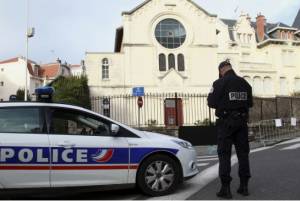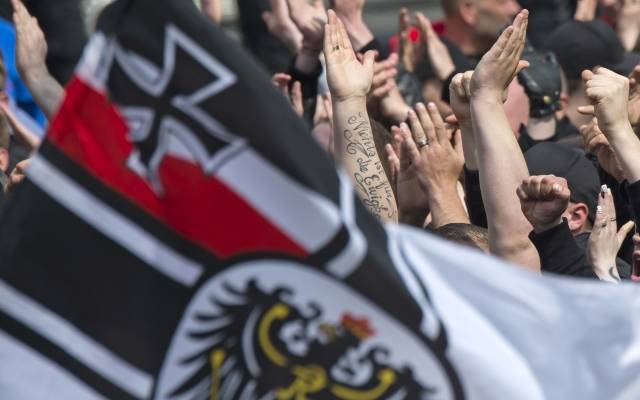While there has been a dramatic drop in volume of anti-Semitic incidents around the world in 2015, the viciousness and violence of the attacks have dramatically increased, an annual survey of the state of anti-Semitism around the world has found.
The General Analysis on Anti-Semitism Worldwide 2015 report, published on Wednesday jointly by Tel-Aviv University, Kantor Center for the Study of Contemporary European Jewry and the European Jewish Congress on the eve of Holocaust Remembrance Day in Israel, found that there has been a 40 percent decrease in violent anti-Semitic incidents, but there has been a dramatic increase in other anti-Semitic manifestations in Europe. The report also found that Jews in Europe are concerned about their future in the Continent.
The number of violent anti-Semitic cases perpetrated against Jews and Jewish sites are down, but the violent cases turned more cruel and murderous, in numbers unknown before; direct threats to gun down Jews escalated; the increasing flow of verbal and visual anti-Semitic expressions, mainly on social media, turned more threatening and insulting.
The number of violent anti-Semitic incidents worldwide monitored by the Kantor Center in 2015 is 410, a considerable decrease of about 46 percent in comparison to 766 incidents in 2014.
This is the lowest number in the last decade, yet it should be noted that 2014 was a very difficult year, especially due to Operation Protective Edge, that the number of violent cases in 2015 is more or less equal to that of 2011, and that compared to 2013 the decrease in 2015 is about 26%.
The decrease is most notable in the various forms of attacks, especially the use of weapons, down 60 percent, and arson, down over 50 percent, and in weaponless cases, direct threats and vandalism as well.

A French police officer guards the synagogue of Biarritz, southwestern France. (Bob Edme/AP)
Regarding targets, the most notable decrease is in cases perpetrated against synagogues, by about 70 percent, and persons by close to 50 percent, as well as against schools and community centers, while the highest numbers of incidents registered was perpetrated against cemeteries and memorials.
The report attributes the decrease in anti-Semitic to three main factors:
– The increase in special security measures, in intelligence surveillance and the enlisting of more police and army units, to secure Jewish sites.
– The political and social activity of the extreme right now focuses on the Muslims and the migrants flooding Europe. In a growing number of cases Muslims were attacked, immigrants centers were set on fire and cemeteries and even mosques were desecrated. The attention has, for the time being, been diverted from the Jews.
– The growing fear of Islamic terror may generate an understanding of the violence Jews and Israelis have encountered in recent decades, and closer ties between Jews and Christians have been forged while facing a common enemy and threat.
Where is Europe headed for the Jews?
“The feeling with which the year 2015 ended was one of fear and concern, among Jews and non-Jews alike, especially in Europe,” the report said. “Waves of immigrants and refugees shook the Continent; terror took a terrible toll in human lives and brought up new thoughts on how democracies would be able to better defend themselves and their citizens.”
The Jews felt threatened primarily by the growing Muslim population, which the report believes is becoming more radicalized.
The increase in the right-wing parties’ electoral power that has been strengthened as a result of the migrant influx has also brought to increase anti-Semitism.
In addition, accusations have already been leveled against the Jewish communities and Israel as responsible for the present wave and the former ones, in order to empty the Middle East and to incite the Western world and the Muslims one against the other.
One result of this as that wearing Jewish identifying signs in public is on the decline.
The report points an accusing finger towards the increasing use of anti-Semitic language against Israel as a Jewish state by the mainstream, “institutional anti-Semitism.”
The report also points to the anti-Israel BDS (Boycott, Divest, Sanction) movement that “aggressively try to undermine its [Israel’s] very existence, turn against Jewish students, and has close ties with so-called liberal circles. All these put the Jews between the anvil and the hammer.”
“Thus, it should be stressed that despite the decrease in the number of violent cases, many Jews reconsider their future and their sense of belonging in their respective countries, because of the significant increase in 2015 in anti-Semitic verbal and visual attacks via social media and the internet at large, creating a hostile atmosphere,” the report concludes.
By: Max Gelber, United with Israel
